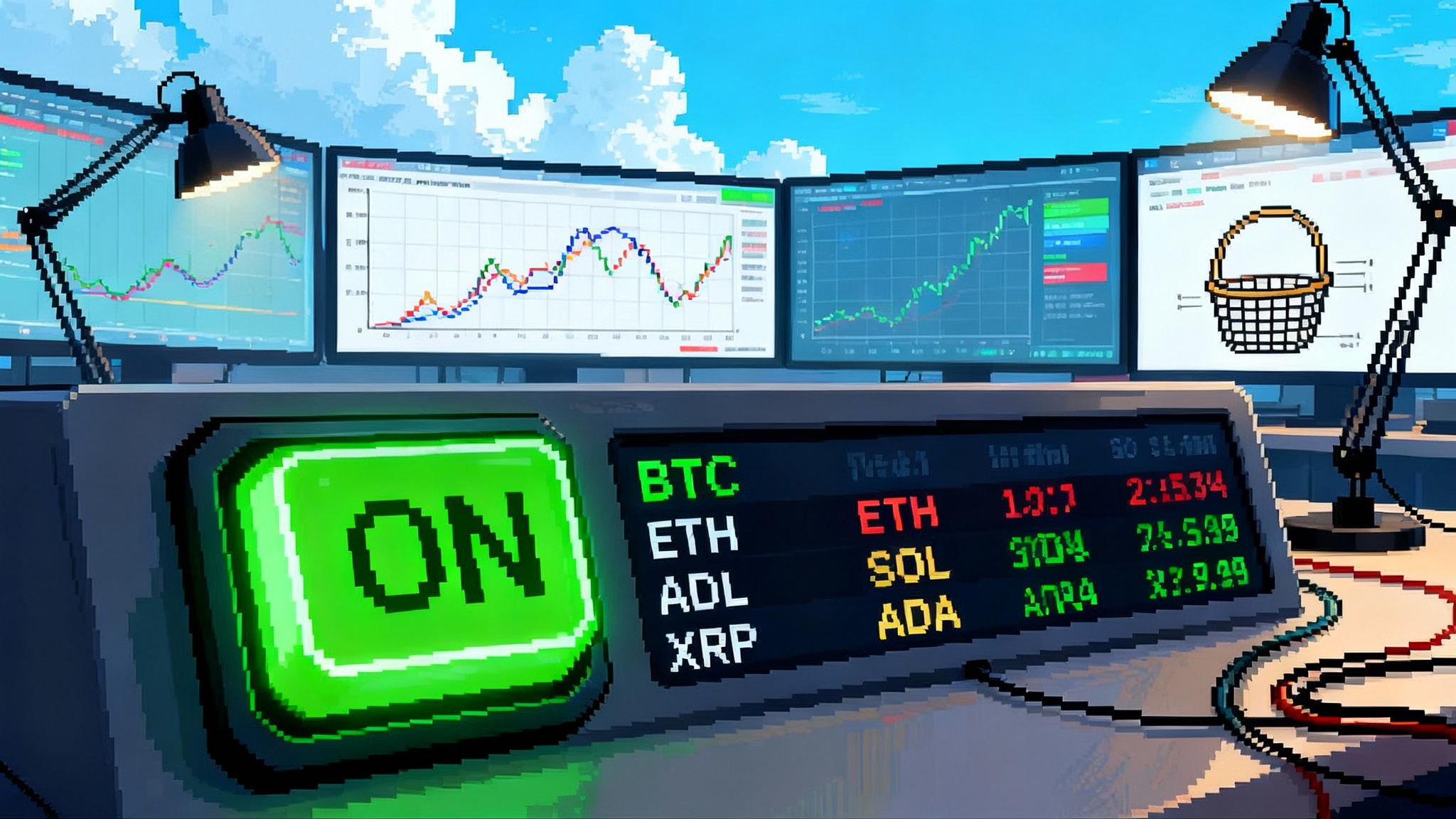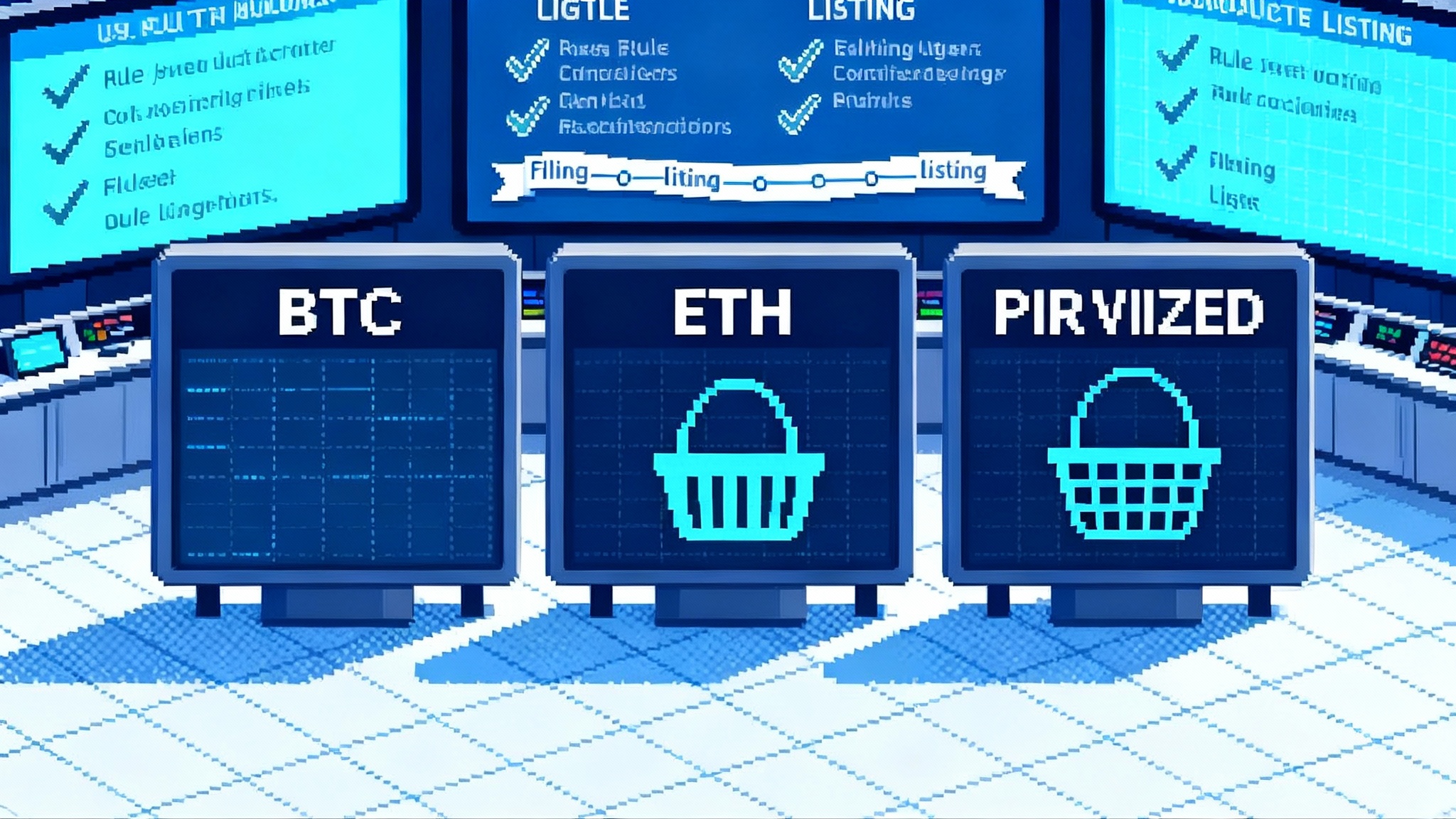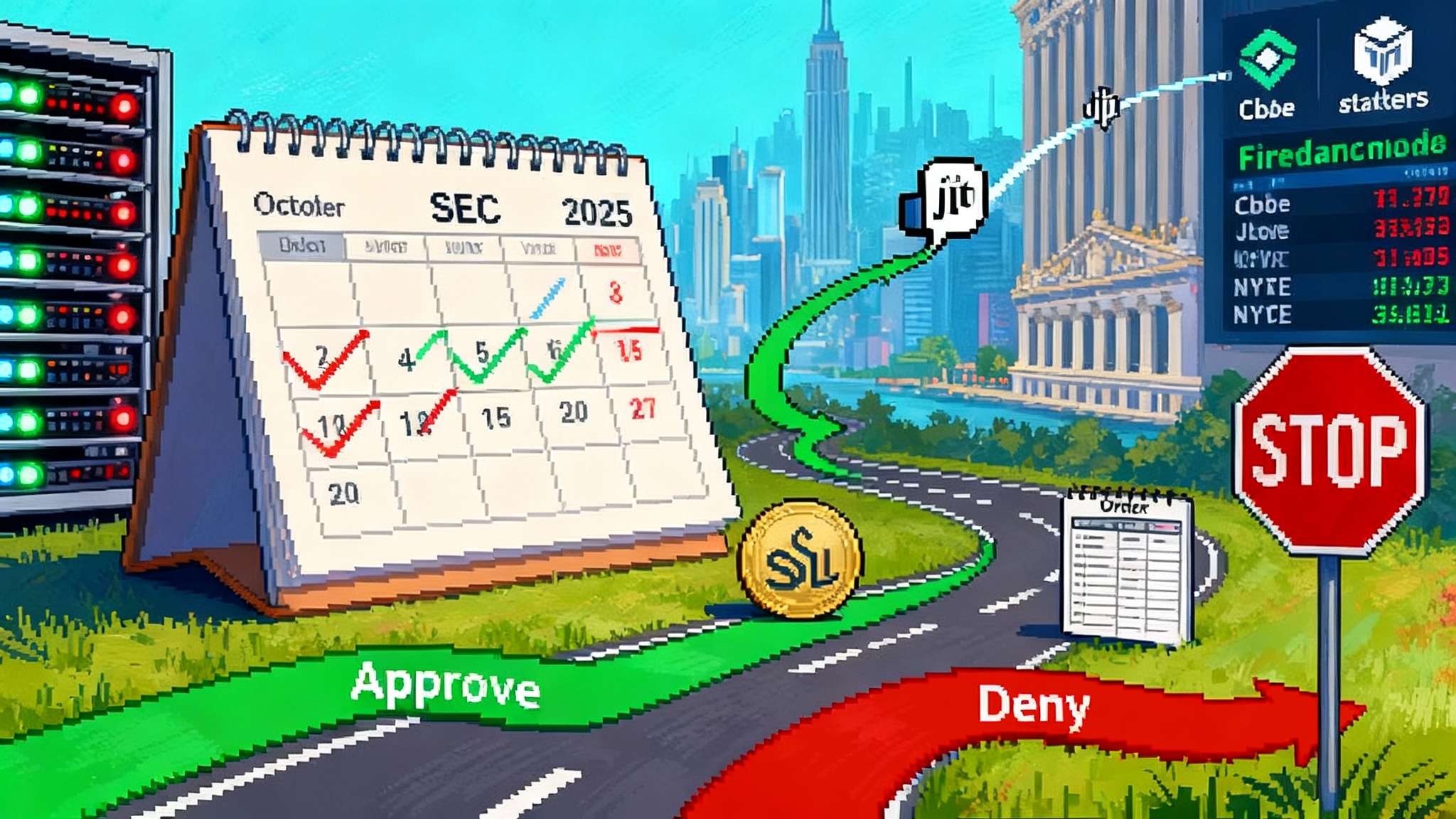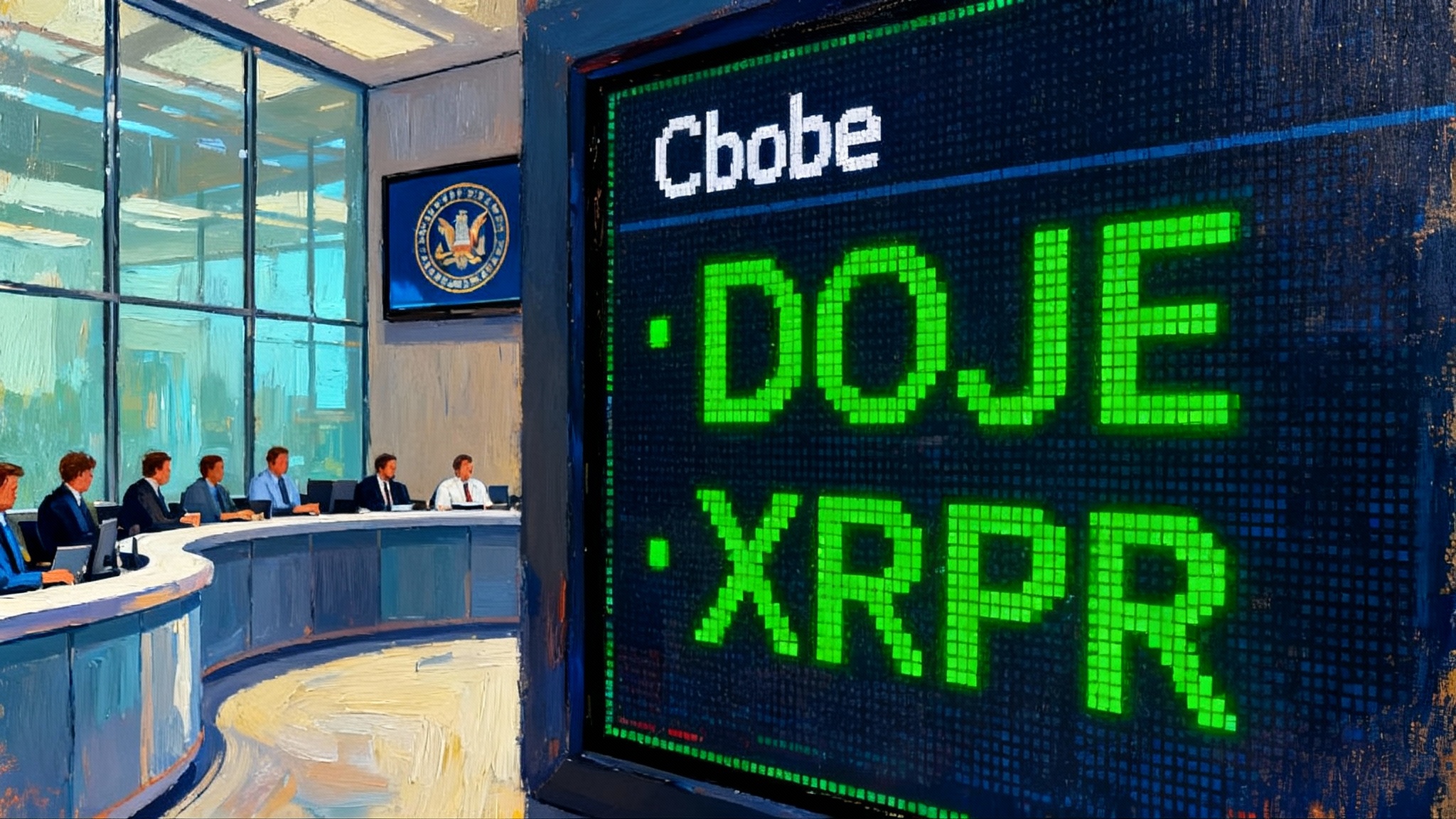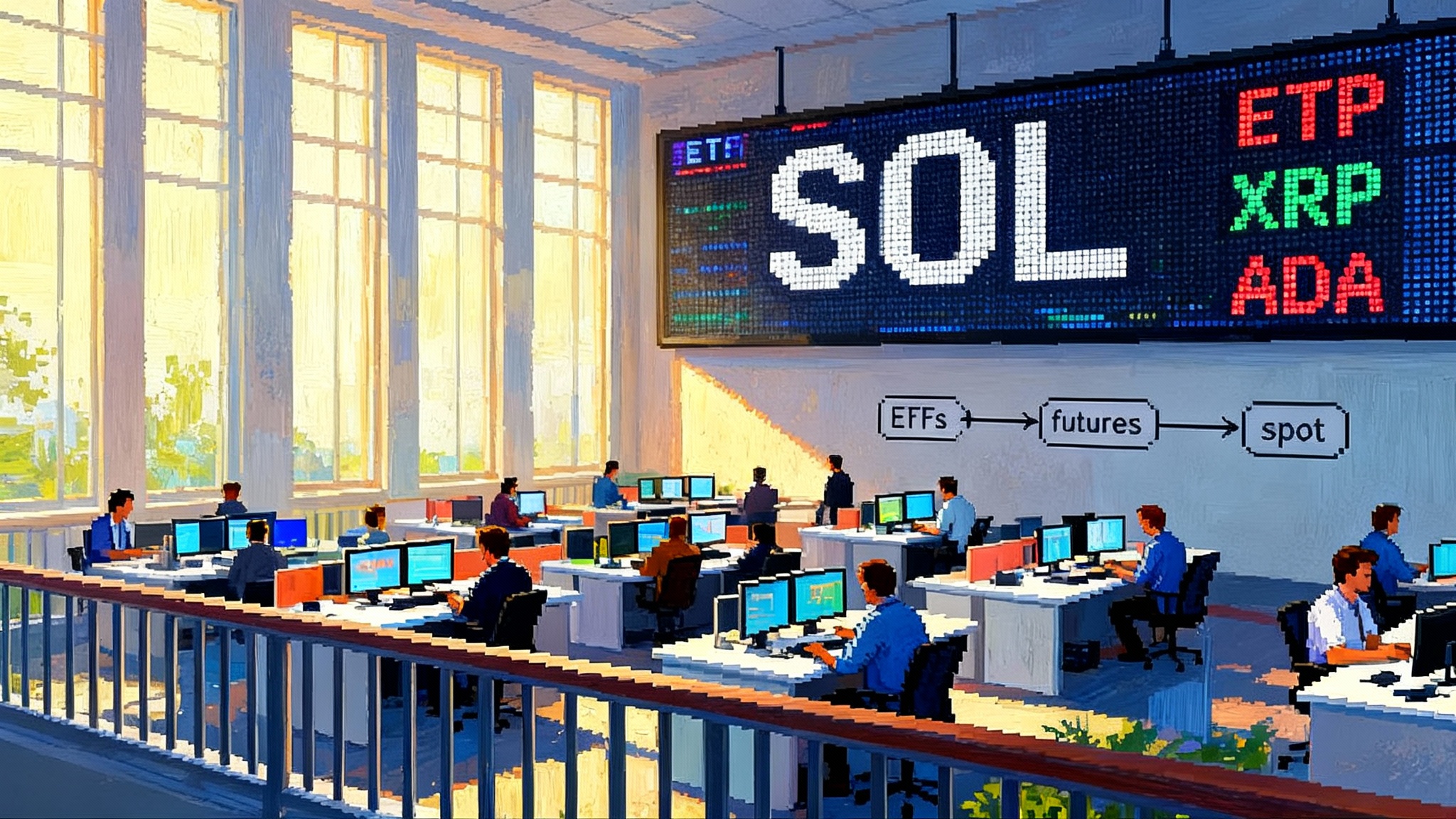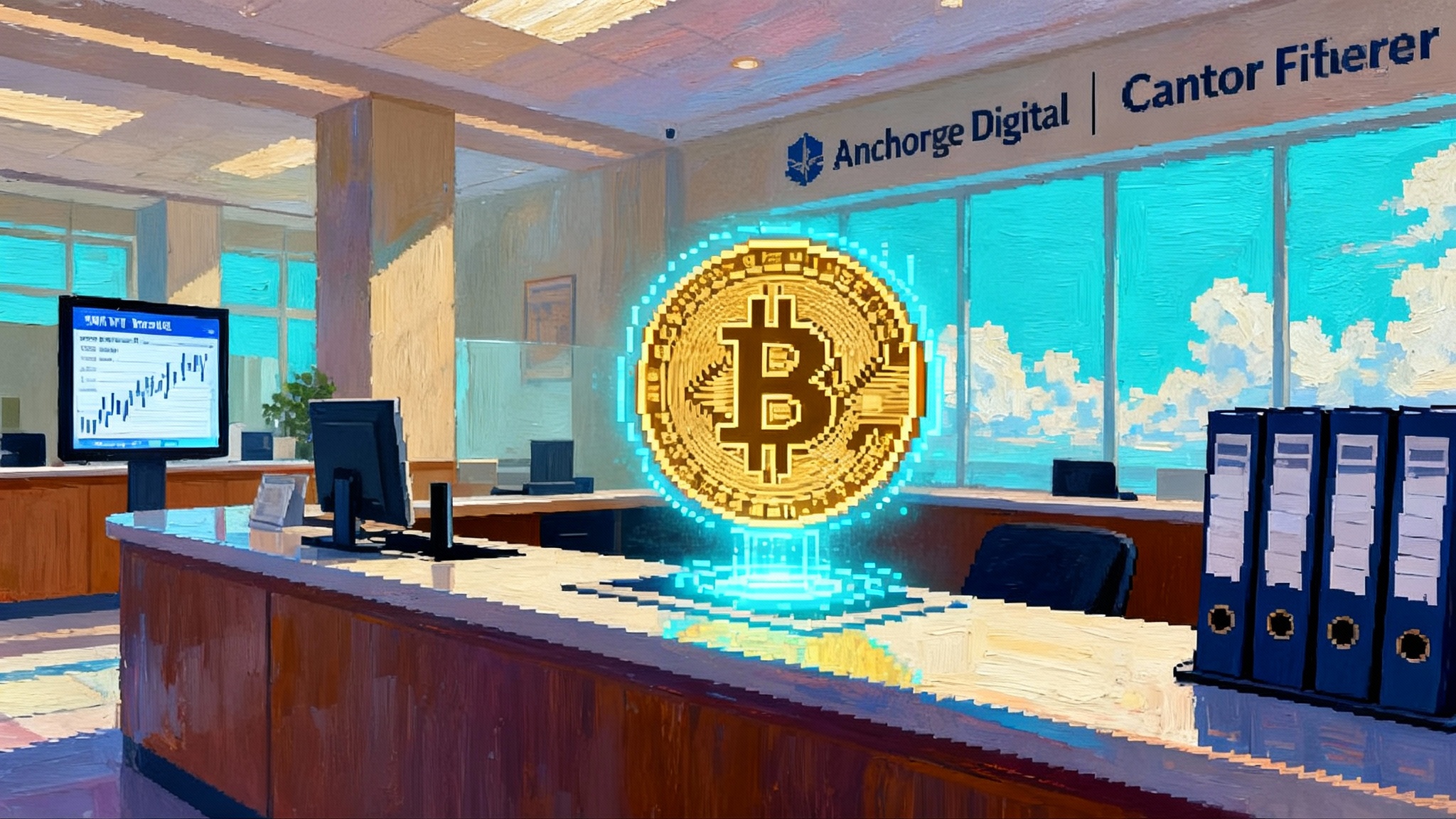Nasdaq’s Tokenized Shares: What ‘Same CUSIP’ Really Means
Nasdaq has asked the SEC to let listed stocks and ETFs settle in tokenized form without splitting liquidity. Here is what same CUSIP and same rights really require, how DTC would move tokens, and why this is not the offshore mimic market.

A quiet filing with big implications
On September 8, 2025, Nasdaq filed a 19b-4 rule change with the SEC to allow listed stocks and ETPs to trade and settle in tokenized form on the same market and order book as their traditional versions. The SEC posted its SEC notice of filing on September 16, 2025. If approved, an investor could submit an order for a name like Apple, select tokenized settlement at entry, and still interact with the full national market system.
This is an upgrade to representation and post-trade, not a new asset class. Nasdaq is keeping tokenized shares under the same rules, data plans, and surveillance as today’s shares. The core design choice is parity: same rights and the same CUSIP.
Same rights and same CUSIP, unpacked
Two phrases do the heavy lifting:
- Same rights means a tokenized share must convey identical economic and governance rights to the traditional share: dividends, voting, splits, liquidation, and all corporate actions. If a token cannot fully deliver those rights, it is a different instrument and belongs on a separate symbol and book.
- Same CUSIP means the tokenized and traditional forms are the same issue in market plumbing. A shared CUSIP keeps quotes and prints unified for the NBBO and consolidated tape, and it lets clearing and corporate action systems treat the pool as fungible.
Together, these requirements prevent liquidity fragmentation and keep investor protections intact.
How settlement could flow through DTC
Nasdaq’s proposal keeps trading neutral and pushes innovation to post-trade. The intended workflow:
- A participant enters an order and flags tokenized or regular settlement.
- The exchange executes as usual.
- Post trade, the instruction passes to the Depository Trust Company, which delivers a tokenized entitlement rather than a conventional DTC book-entry.
A few details to watch:
- Wallets and control locations: Expect custodial wallets tied to broker-dealers or banks with DTC accounts and qualified custodian status. Retail self-custody is unlikely at launch.
- Chain selection: No chain is specified. Initial rollouts likely use permissioned networks that meet DTC’s operational and audit standards. Public chain access, if any, would come via whitelisted contracts and permissioned bridges.
- T+1 alignment: Tokenization does not change T+1. Faster on-chain finality helps reconciliation and mobility, not the U.S. settlement calendar.
- Corporate actions: With the same CUSIP, DTC can apply the same corporate action feeds and entitlement processing across forms.
For Nasdaq’s own framing, see Nasdaq’s tokenization Q&A.
Why this is not the offshore mimic market
Some non U.S. venues listed tokenized or synthetic stocks without full shareholder rights, issuer involvement, or clearing through the real infrastructure. Those were wrappers or derivatives, not the security itself. Nasdaq’s approach avoids this by insisting on the same rights, the same CUSIP, the same surveillance, and the same reporting. Trading still contributes to the NBBO, and the SIP still prints the trades.
Market structure impacts to watch
- Order handling neutrality holds: Tokenization is a settlement attribute, not a queue-jumping order type. Routers should pass a tokenization flag through to clearing without routing bias.
- Clean consolidated data: One CUSIP means one stream of quotes and trades, preserving best execution analytics.
- Securities lending and short sales: Operations will need playbooks when borrows and returns mix tokenized and traditional forms. Control locations and inventory tagging will matter.
- Closeouts and fails: On-chain finality could reduce some reconciliation fails and improve audit trails, but mixed settlements introduce new exceptions.
- Collateral and rehypothecation: Tokens in controlled wallets enable pledging and recalls with richer intraday telemetry. Expect pilots for dynamic haircuts and intraday VaR.
- Cross-venue portability: Programmable instructions can lower switching costs across primes and custodians even if the trading venue stays put.
For broader context on how SEC frameworks can accommodate modernization without fragmenting markets, see our explainer on generic listing rules reshape ETFs and this breakdown of SEC generic crypto ETF rules reset.
Knock-on effects beyond equities
- RWAs and funds: The same chassis can extend to funds and, over time, fixed income through separate filings, preserving CUSIP and investor protections.
- Broker-dealers: Front ends add a simple toggle. Back offices map customer instructions to DTC, update 15c3-3 custody controls for tokenized securities, and enhance stock records to link DTC statements with on-chain proofs.
- Custody and wallets: Expect qualified custodians to anchor early phases. Broker-branded wallets will likely sit on sub-custody. Retail self-custody would complicate entitlements and proxy processes.
- Web3 composability: The near-term reality is controlled composability on allow-listed networks. Over time, compliant bridges could expand access without sacrificing KYC or market integrity. For how composable flows are already evolving in regulated products, see multi-asset ETF in-kind flows.
What still needs approval
- SEC approval of Nasdaq’s 19b-4: The Commission can approve, disapprove, or institute proceedings.
- DTC service readiness: Clearing agencies may need rule updates to define eligible networks, control location mechanics, and recovery plans.
- Broker-dealer controls: Firms must fit tokenized settlements within Reg SCI, Reg S-P, 15c3-3, books and records, and cyber programs. Expect FINRA guidance and CAT flagging for tokenized lifecycle events.
- Transfer agent and issuer coordination: Clean mappings of tokenized balances within street name are essential for corporate actions.
Timelines and scenarios for the next 6 to 18 months
-
Scenario A: Base case pilot in late 2026
- Q4 2025 to Q1 2026: SEC engages on technical questions; DTC circulates draft service guides.
- Q2 2026: Conditional approval tied to DTC readiness and control location standards; member certification testing begins.
- Q3 2026: Limited pilot in several large caps and flagship ETFs on a permissioned chain.
-
Scenario B: Accelerated path with staged features
- Q1 2026: Approval with phases. ETPs launch first, then common stocks. One network at launch. Wallet custody limited to audited banks and large brokers.
- Q2 to Q3 2026: Corporate actions and proxy voting integrate. Lending desks deliver tokenized borrows to test intraday collateral use.
-
Scenario C: Extended delay while rules mature
- Through 2026: Proceedings seek clarity on cybersecurity, key management, and chain incident response. Approval slips to 2027 or later, possibly with narrow pilots.
How this could change daily life on the Street
- Traders: A new toggle in the ticket. Choice depends on counterparties and back-office readiness.
- Operations: New exception categories, reconciliations that include on-chain proofs, and closer coordination with transfer agents.
- Risk: Better telemetry for control locations and movement histories. Credit still centers on counterparties, with added views on network resiliency.
- Issuers: Potentially easier cross-border distribution and more reliable, programmable corporate actions.
The bottom line
Nasdaq’s tokenization push keeps U.S. market structure intact while modernizing the settlement rail. Same rights and the same CUSIP anchor investor protections, NBBO integrity, and the consolidated tape. If the SEC signs off, tokenized settlement will likely start quietly, solve real operational pain, and then scale in measured steps.

